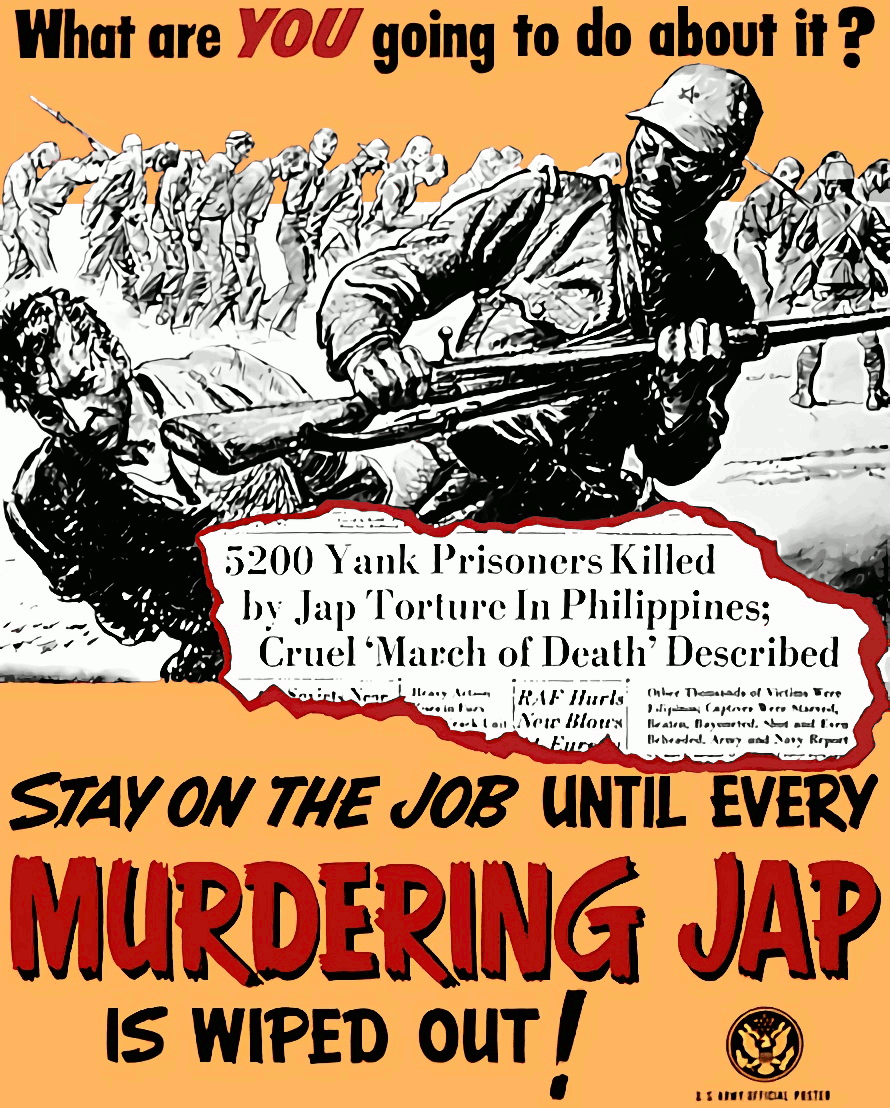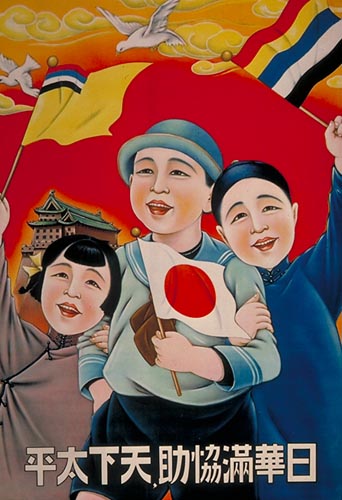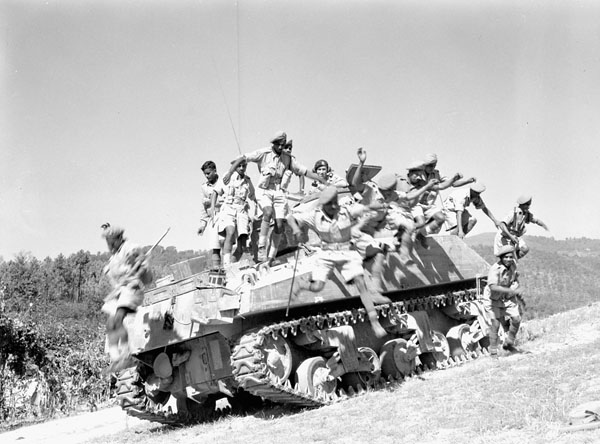|
Propaganda And India In World War II
Throughout World War II, both the Axis and Allied sides used propaganda to sway the opinions of Indian people, Indian civilians and troops, while at the same time Indian nationalists applied propaganda both within and outside India to promote the cause of Indian Independence Movement, Indian independence. Allied Propaganda in India British Propaganda in India The Far Eastern Bureau was responsible for all overt propaganda in India, and for the printing of leaflets and newspapers to be disseminated there. Front line propaganda to Indian soldiers was carried out by the General Headquarters of India (GHQ). The majority of British propaganda was disseminated through newspaper, radio, and printed news sheets and leaflets. One news sheet was titled the "Hamara Hindustan" and was a four-page weekly newspaper with stories of progress in the war in Europe and Asia, as well as maps and images. This paper was printed in Urdu, and first disseminated in early 1944 by GHQ, India. Many of ... [...More Info...] [...Related Items...] OR: [Wikipedia] [Google] [Baidu] |
Propaganda
Propaganda is communication that is primarily used to influence or persuade an audience to further an agenda, which may not be objective and may be selectively presenting facts to encourage a particular synthesis or perception, or using loaded language to produce an emotional rather than a rational response to the information that is being presented. Propaganda can be found in news and journalism, government, advertising, entertainment, education, and activism and is often associated with material which is prepared by governments as part of war efforts, political campaigns, health campaigns, revolutionaries, big businesses, ultra-religious organizations, the media, and certain individuals such as soapboxers. In the 20th century, the English term ''propaganda'' was often associated with a manipulative approach, but historically, propaganda has been a neutral descriptive term of any material that promotes certain opinions or ideologies. Equivalent non-English terms have also l ... [...More Info...] [...Related Items...] OR: [Wikipedia] [Google] [Baidu] |
Cannon Fodder
Cannon fodder is an informal, derogatory term for combatants who are regarded or treated by government or military command as expendable in the face of enemy fire. The term is generally used in situations where combatants are forced to deliberately fight against hopeless odds (with the foreknowledge that they will suffer extremely high casualties) in an effort to achieve a strategic goal; an example is the trench warfare of World War I. The term may also be used (somewhat pejoratively) to differentiate infantry from other forces (such as artillery troops, air force or the navy), or to distinguish expendable low-grade or inexperienced combatants from more militarily valuable veterans. The term derives from fodder, as food for livestock. Soldiers are the metaphorical food for enemy cannon fire. Etymology The concept of soldiers as fodder, as nothing more than "food" to be consumed by battle, dates back to at least the 16th century. For example, in William Shakespeare's play ''Henry ... [...More Info...] [...Related Items...] OR: [Wikipedia] [Google] [Baidu] |
Military History Of India During World War II
A military, also known collectively as armed forces, is a heavily armed, highly organized force primarily intended for warfare. It is typically authorized and maintained by a sovereign state, with its members identifiable by their distinct military uniform. It may consist of one or more military branches such as an army, navy, air force, space force, marines, or coast guard. The main task of the military is usually defined as defence of the state and its interests against external armed threats. In broad usage, the terms ''armed forces'' and ''military'' are often treated as synonymous, although in technical usage a distinction is sometimes made in which a country's armed forces may include both its military and other paramilitary forces. There are various forms of irregular military forces, not belonging to a recognized state; though they share many attributes with regular military forces, they are less often referred to as simply ''military''. A nation's military may f ... [...More Info...] [...Related Items...] OR: [Wikipedia] [Google] [Baidu] |
Propaganda In India
Propaganda is communication that is primarily used to influence or persuade an audience to further an agenda, which may not be objective and may be selectively presenting facts to encourage a particular synthesis or perception, or using loaded language to produce an emotional rather than a rational response to the information that is being presented. Propaganda can be found in news and journalism, government, advertising, entertainment, education, and activism and is often associated with material which is prepared by governments as part of war efforts, political campaigns, health campaigns, revolutionaries, big businesses, ultra-religious organizations, the media, and certain individuals such as soapboxers. In the 20th century, the English term ''propaganda'' was often associated with a manipulative approach, but historically, propaganda has been a neutral descriptive term of any material that promotes certain opinions or ideologies. Equivalent non-English terms have also ... [...More Info...] [...Related Items...] OR: [Wikipedia] [Google] [Baidu] |
Japanese Propaganda During World War II
Propaganda in Imperial Japan, in the period just before and during World War II, was designed to assist the regime in governing during that time. Many of its elements were continuous with pre-war themes of Shōwa statism, including the principles of ''kokutai, hakkō ichiu'', and ''bushido''. New forms of propaganda were developed to persuade occupied countries of the benefits of the Greater Asia Co-Prosperity Sphere, to undermine American troops' morale, to counteract claims of Japanese atrocities, and to present the war to the Japanese people as victorious. It started with the Second Sino-Japanese War, which merged into World War II. It used a large variety of media to send its messages. Nature of Japanese propaganda Propaganda is non- objective information intended to promote a particular political cause or view. In that sense, Japanese propaganda was no different from other nations' propaganda, but it had some defining elements, such as nationalism. Japanese wartime propa ... [...More Info...] [...Related Items...] OR: [Wikipedia] [Google] [Baidu] |
British Propaganda During World War II
Britain re-created the World War I Ministry of Information for the duration of World War II to generate propaganda to influence the population towards support for the war effort. A wide range of media was employed aimed at local and overseas audiences. Traditional forms such as newspapers and posters were joined by new media including cinema (film), newsreels and radio. A wide range of themes were addressed, fostering hostility to the enemy, support for allies, and specific pro war projects such as conserving metal and growing vegetables. Media Cinema The story of British cinema in the Second World War is inextricably linked with that of the Ministry of Information. Formed on 4 September 1939, the day after Britain's declaration of war, the Ministry of Information (MOI) was the central government department responsible for publicity and propaganda in the Second World War. It was the ministry's function to "present the national case to the public at home and abroad". The MOI ... [...More Info...] [...Related Items...] OR: [Wikipedia] [Google] [Baidu] |
India In World War II
During the Second World War (1939–1945), India was a part of the British Empire. India officially declared war on Nazi Germany in September 1939. India, as a part of the Allied Nations, sent over two and a half million soldiers to fight under British command against the Axis powers. India also provided the base for American operations in support of China in the China Burma India Theater. Indians fought with distinction throughout the world, including in the European theatre against Germany, North African Campaign against fascist Italy, and in the southeast Asian theatre; while also defending the Indian subcontinent against the Japanese forces, including British Burma and the Crown colony of Ceylon. Indian troops were also redeployed in former colonies such as Singapore and Hong Kong, with the Japanese surrender in August 1945, after the end of World War II. Over 87,000 Indian troops, and 3 million civilians died in World War II. Field Marshal Sir Claude Auchin ... [...More Info...] [...Related Items...] OR: [Wikipedia] [Google] [Baidu] |
Boston
Boston (), officially the City of Boston, is the state capital and most populous city of the Commonwealth of Massachusetts, as well as the cultural and financial center of the New England region of the United States. It is the 24th- most populous city in the country. The city boundaries encompass an area of about and a population of 675,647 as of 2020. It is the seat of Suffolk County (although the county government was disbanded on July 1, 1999). The city is the economic and cultural anchor of a substantially larger metropolitan area known as Greater Boston, a metropolitan statistical area (MSA) home to a census-estimated 4.8 million people in 2016 and ranking as the tenth-largest MSA in the country. A broader combined statistical area (CSA), generally corresponding to the commuting area and including Providence, Rhode Island, is home to approximately 8.2 million people, making it the sixth most populous in the United States. Boston is one of the oldest ... [...More Info...] [...Related Items...] OR: [Wikipedia] [Google] [Baidu] |
New York City
New York, often called New York City or NYC, is the List of United States cities by population, most populous city in the United States. With a 2020 population of 8,804,190 distributed over , New York City is also the List of United States cities by population density, most densely populated major city in the United States, and is more than twice as populous as second-place Los Angeles. New York City lies at the southern tip of New York (state), New York State, and constitutes the geographical and demographic center of both the Northeast megalopolis and the New York metropolitan area, the largest metropolitan area in the world by urban area, urban landmass. With over 20.1 million people in its metropolitan statistical area and 23.5 million in its combined statistical area as of 2020, New York is one of the world's most populous Megacity, megacities, and over 58 million people live within of the city. New York City is a global city, global Culture of New ... [...More Info...] [...Related Items...] OR: [Wikipedia] [Google] [Baidu] |
Jawaharlal Nehru
Pandit Jawaharlal Nehru (; ; ; 14 November 1889 – 27 May 1964) was an Indian Anti-colonial nationalism, anti-colonial nationalist, secular humanist, social democrat— * * * * and author who was a central figure in India during the middle of the 20th century. Nehru was a principal leader of the Indian independence movement, Indian nationalist movement in the 1930s and 1940s. Upon India's independence in 1947, he served as the Prime Minister of India, country's prime minister for 16 years. Nehru promoted Parliamentary system, parliamentary democracy, Secularism in India, secularism, and Science and technology in India, science and technology during the 1950s, powerfully influencing India's arc as a modern nation. In international affairs, he steered India clear of the two blocs of the Cold War. A well-regarded author, his books written in prison, such as ''Letters from a Father to His Daughter'' (1929), ''An Autobiography (Nehru), An Autobiography'' (1936) and ... [...More Info...] [...Related Items...] OR: [Wikipedia] [Google] [Baidu] |
Mohandas Karamchand Gandhi
Mohandas Karamchand Gandhi (; ; 2 October 1869 – 30 January 1948), popularly known as Mahatma Gandhi, was an Indian lawyer, anti-colonial nationalist Quote: "... marks Gandhi as a hybrid cosmopolitan figure who transformed ... anti-colonial nationalist politics in the twentieth-century in ways that neither indigenous nor westernized Indian nationalists could." and political ethicist Quote: "Gandhi staked his reputation as an original political thinker on this specific issue. Hitherto, violence had been used in the name of political rights, such as in street riots, regicide, or armed revolutions. Gandhi believes there is a better way of securing political rights, that of nonviolence, and that this new way marks an advance in political ethics." who employed nonviolent resistance to lead the successful campaign for India's independence from British rule, and to later inspire movements for civil rights and freedom across the world. The honorific '' Mahātmā'' ( Sansk ... [...More Info...] [...Related Items...] OR: [Wikipedia] [Google] [Baidu] |







